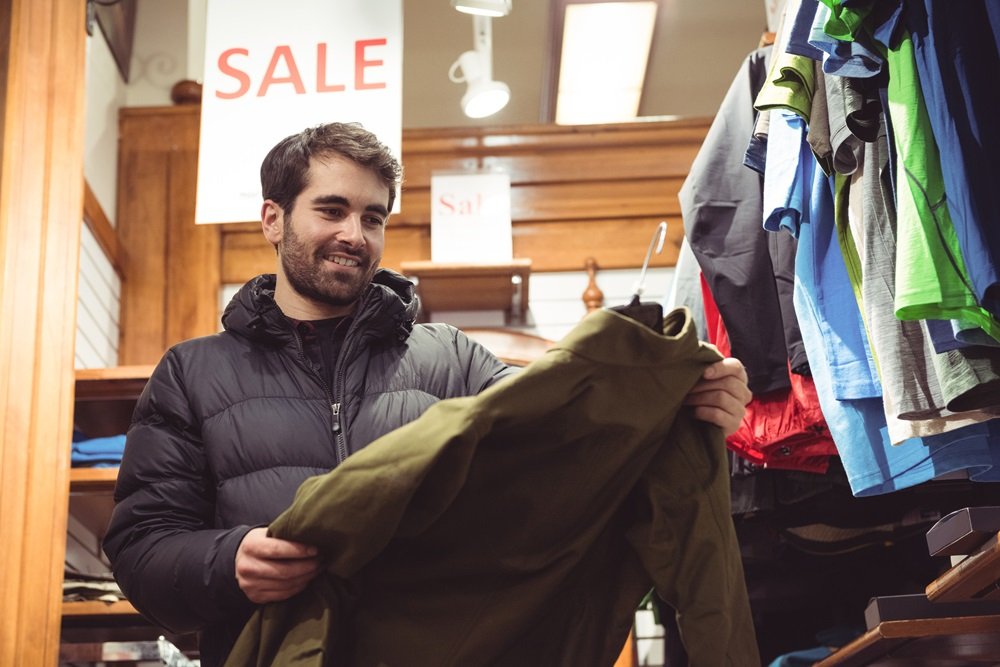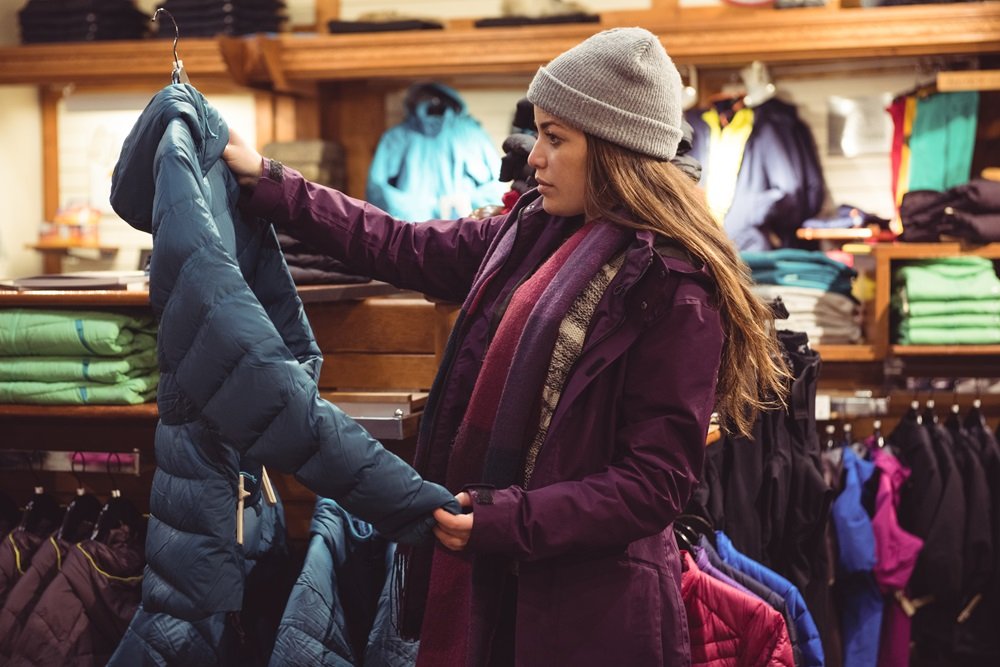Buying used Columbia gear can save you serious money, but counterfeits are everywhere.
You need to know what to look for when shopping secondhand. Fake Columbia products have flooded the market, making authentication crucial for smart buyers.
We’ll show you exactly how to verify authentic gear and protect your investment.
Why Authentication Matters When Buying Used Columbia?
The outdoor gear market sees millions of counterfeit items sold each year. Fake Columbia products often use cheap materials that fail during outdoor activities.
You might think you’re getting a great deal on used Columbia jackets or boots, but poor-quality fakes can leave you cold and wet when you need protection most.
Authentic Columbia gear maintains its resale value better than knockoffs.
Real products also come with warranty protection that counterfeit items lack. When you buy genuine used gear, you’re getting tested technology that outdoor enthusiasts trust.
Key Features That Separate Real from Fake
Logo and Branding Details
Real Columbia logos have precise stitching and consistent font styling. The company’s signature logo features clean lines and proper proportions. Fake products often show uneven stitching, blurry text, or slightly wrong colors.
Check the logo placement carefully. Authentic items place logos in specific locations that counterfeiters often get wrong. The logo should feel raised and textured, not flat or printed directly onto fabric.
Material Quality Indicators
Genuine Columbia gear uses high-performance fabrics that feel substantial.
You can tell quality materials by their weight and texture. Authentic waterproof fabrics have a specific feel that’s hard to replicate cheaply.
Touch and squeeze the material between your fingers. Real Columbia fabrics maintain their shape and bounce back quickly. Fake materials often feel thin, rough, or plasticky.
Authentication Methods You Can Use
Physical Inspection Techniques
Start your inspection with the zippers and hardware. Columbia uses quality zippers that operate smoothly and show consistent branding. Cheap fakes often have sticky zippers or mismatched hardware colors.
Examine all seams and stitching patterns. Authentic gear shows straight, even stitching with matching thread colors. Counterfeit items frequently have crooked seams, loose threads, or color mismatches.
Pay special attention to reinforced areas like pockets and stress points. Real Columbia products reinforce these areas properly, while fakes often skip this expensive step.
Tag and Label Verification
Authentic Columbia products have specific tag layouts and information.
The care labels include detailed washing instructions and fabric content percentages. Fake items often have generic tags or missing information.
Look for holographic elements or special tag materials that are expensive to reproduce.
Many authentic pieces include size tags with specific fonts and spacing that counterfeiters struggle to match exactly.
| Authentic Features | Counterfeit Red Flags |
| Crisp, clear logo printing | Blurry or faded logos |
| Quality zippers that glide smoothly | Sticky or cheap-feeling zippers |
| Even, straight stitching | Crooked or loose threads |
| Proper tag information and fonts | Generic or missing tag details |
| High-quality fabric texture | Thin, plasticky materials |
Digital Verification Tools and Resources
Modern technology offers several ways to verify authentic gear online. You can cross-reference style numbers, check product databases, and use authentication apps. Some platforms specialize in verifying outdoor gear authenticity.
Style numbers on genuine products match official records exactly. These codes appear in specific locations and follow consistent formatting. Counterfeit items often use fake style numbers or place them incorrectly.
Search the style number online to see official product photos. Compare these images carefully with the item you’re considering. Look for differences in color, design details, or logo placement.
Common Counterfeiting Tricks to Watch For
Sophisticated fakes copy popular styles but change small details to avoid legal issues.
You might see items that look almost identical but have slightly different color combinations or minor design changes.
Some sellers mix authentic and fake items in their inventory. This makes their overall rating look good while they profit from selling counterfeits. Always evaluate each item individually, regardless of seller reputation.
Be extra cautious with heavily discounted items or bulk sellers. While great deals exist in the used market, prices that seem too good often indicate counterfeit products.
Where to Buy Verified Used Columbia Safely?
Stick to platforms with authentication services or return policies. Some marketplaces verify items before listing them, while others offer buyer protection programs. Read seller reviews and look for detailed product photos.
Ask sellers specific questions about the gear’s history and condition. Legitimate sellers usually provide detailed answers and additional photos upon request. Hesitant or evasive responses often signal problems.
Final Authentication Tips
Remember that authentic used Columbia gear should show consistent quality throughout every detail.
From stitching to hardware, real products maintain standards that cheap counterfeits can’t match. Trust your instincts when something feels wrong about a deal.
When buying used Columbia products, take time to inspect thoroughly before purchasing.
Your investment in quality outdoor gear depends on getting authentic items that perform when you need them most.

Frequently Asked Questions
Why is it risky to buy fake Columbia gear?
Answer: Counterfeit Columbia products often use cheap materials that don’t perform outdoors. They may leak, tear, or fail in harsh weather, leaving you unprotected. Authentic gear offers tested performance, warranty coverage, and higher resale value.
How can I quickly spot a fake Columbia logo?
Answer: Real Columbia logos have sharp, clean stitching and precise font proportions. The logo is usually raised or textured, not flat or blurry. Counterfeits often use slightly wrong colors, uneven stitches, or misplaced logos.
What does genuine Columbia fabric feel like?
Answer: Authentic Columbia gear uses durable, performance-grade fabrics. They feel substantial, smooth, and resilient—bouncing back when squeezed. Fake fabrics often feel thin, plasticky, or rough.
Are zippers and hardware a good way to identify authenticity?
Answer: Yes—real Columbia products use smooth, durable zippers with consistent branding. Counterfeits often have sticky, cheap-feeling zippers, mismatched colors, or flimsy pulls.
What should I check on the product tags and labels?
Answer: Authentic Columbia tags have detailed washing instructions, fabric content, and sometimes holographic elements. The fonts and spacing are consistent. Fake items usually have generic, missing, or sloppy labels.
How can I use style numbers to verify Columbia gear?
Answer: Every authentic Columbia item has a style number that matches official records. Search the number online and compare the item to official photos. If the code is missing, formatted incorrectly, or doesn’t match, it’s likely a fake.
Are all heavily discounted Columbia products fake?
Answer: Not necessarily—but extremely low prices should raise suspicion. Counterfeiters often lure buyers with deals that seem too good to be true. Always inspect details carefully and verify authenticity before purchasing.
What are some common counterfeiting tricks to watch for?
- Small design changes in popular styles (colors slightly off, different stitching)
- Mixing real and fake items in a seller’s stock
- Vague product descriptions and blurry photos
- Sellers avoiding questions or refusing extra pictures
Where is the safest place to buy verified used Columbia gear?
Answer: Stick to trusted marketplaces with authentication services, buyer protection, or return policies. Check seller reviews, demand clear photos, and ask specific questions about the gear’s history.What’s the most important thing to remember before buying?
Answer: Always inspect the small details—logos, stitching, tags, zippers, and fabric. Authentic Columbia gear shows consistent quality everywhere, while fakes cut corners. If something feels off, trust your instincts and walk away.


